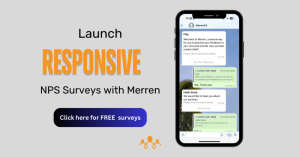Customer feedback surveys a window to a person’s thoughts and experiences. It allows marketing professionals to quantify responses and offer solutions. In this blog, we will discuss important metrics of a survey, how to create it and analyze response rates.
What is a Customer Feedback Survey?
A customer feedback survey is a tool that can gather opinions, perceptions, and experiences from your customers. These surveys include open-ended questions and closed-ended questions. Feedback surveys ask questions related to the products and services the people are using.
Is a feedback survey necessary?
Customer feedback is invaluable for several reasons. Firstly, it provides direct insights into customer satisfaction and dissatisfaction. Businesses can make informed decisions about product or service improvements. Utilizing a systematic approach to collect feedback can highlight issues that may not be immediately visible to the company. Moreover, feedback allows brands to thrive in a competitive market by continuously evolving based on buyer expectations and market trends.
CX professionals actively leverage feedback to improve service quality and customer experience. By understanding what works and what doesn’t, they can finetune various aspects of customer interaction, ranging from product features to customer service protocols.
Benefits for CX professionals
For customer experience professionals, especially in the USA, the advantages of effectively utilizing customer feedback surveys are multifaceted. These professionals can:
- Enhance Customer Satisfaction: Feedback highlights pain points and areas requiring improvement, leading to better customer satisfaction.
- Drive Engagement: By involving customers in the improvement process, businesses can make them feel valued and more loyal.
- Benchmark Performance: Surveys provide quantifiable data that can be used to measure performance over time.
- Aid in Strategy Development: Feedback helps in strategizing for new product launches, marketing campaigns, and customer service initiatives.
- Promote Proactive Problem Solving: It enables professionals to anticipate problems and implement solutions before they escalate.
Determine the Objectives of Your Survey
Clarifying Your Goals
The first step in creating an effective customer feedback survey is to clearly define your objectives. What do you want to learn from your customers? Are you trying to understand overall satisfaction, product usability, or specific pain points? Clear objectives guide the formulation of relevant questions and ensure that the survey addresses the business questions at hand.
Types of Feedback Surveys
Feedback surveys can take various forms, each designed to measure different aspects of the customer experience:
- Net Promoter Score (NPS): NPS is a widely-used metric that measures customer loyalty. It asks respondents to rate, on a scale from 0 to 10, how likely they are to recommend your product or service to others.
- Customer Satisfaction Score (CSAT): The CSAT survey measures customer satisfaction with a specific interaction or overall experience. Typically, it utilizes a scale of 1 to 5, where respondents indicate their level of satisfaction.
- Customer Effort Score (CES): CES assesses how much effort customers have to put in to get an issue resolved or to use a product. It helps in identifying and minimizing friction points in the customer journey.
Setting Measurable KPIs
Once your objectives are clear, establish key performance indicators (KPIs) to measure the success of your survey. KPIs should be specific, measurable, achievable, relevant, and time-bound (SMART). Examples of KPIs include:
- Response Rate: The percentage of customers who respond to your survey.
- NPS Score: The net score of promoters minus detractors.
- CSAT Score: The average satisfaction rating given by respondents.
- CES Score: The average effort score indicating the ease of interaction with the company.
Setting these KPIs will help you gauge how well your survey is performing and provide benchmarks for future improvements.
Selecting the Right Survey Tool
Criteria for selection
Choosing the right survey tool is critical for gathering meaningful feedback. Here are some key features to consider:
- Ease of Use: The tool should be user-friendly, both for administrators creating the survey and respondents taking it.
- Customization Options: Look for tools that offer customization options for branding, question types, and survey logic.
- Data Analysis Capabilities: The tool should provide robust data analysis features, including real-time reporting, data segmentation, and visualization tools.
- Integration Capabilities: It should easily integrate with your existing systems, such as CRM or marketing automation platforms.
- Support and Reliability: Consider tools that offer strong customer support and reliability to ensure smooth operation.

Top tools for creating CX surveys
Several tools are renowned for their effectiveness in creating and managing customer feedback surveys. Here are some top choices:
- Merren: Offers instant conversational survey templates and automated journey mapping facilities. You can also create an AI survey in a few clicks.
- SurveySparrow: Offers seamless survey creation with robust data analysis and CRM integration.
- QuestionPro: Known for its user-friendly interface and extensive customization options.
- SurveyMonkey: Popular for its ease of use and a wide variety of question types and analysis tools.
- SurveySensum: Provides effective surveys integrated with email, making it easy to collect feedback within your workflow.
Designing Effective Survey Questions
Types of questions
The effectiveness of your survey heavily relies on the types of questions asked. The main categories include:
- Open-Ended Questions: Allows respondents to provide detailed answers in their own words. Useful for gaining deeper insights but harder to analyze.
- Close-Ended Questions: Provides specific answer choices, making data easier to analyze. Examples include multiple-choice and yes/no questions.
- Likert Scale: Uses a scale (typically from 1 to 5 or 1 to 7) to measure the extent of agreement or satisfaction.
- Rating Scale: Asks respondents to rate a particular aspect on a numerical scale, such as choosing an answer from a scale of 1 to 10.
Best practices
When designing survey questions, follow these best practices:
- Clarity: Ensure your questions are clear and easily understood. Avoid jargon and ambiguous terms.
- Neutrality: Avoid leading questions that could bias responses. Questions should be neutral and objective.
- Relevance: Make sure every question serves your survey’s objectives and provides meaningful data.
Avoiding common mistakes
Be aware of common pitfalls in survey design:
- Leading Questions: Questions that suggest a particular answer can bias results. For example, instead of “How much did you enjoy our new feature?”, use “How would you rate your experience with our new feature?”
- Double-Barreled Questions: Avoid questions that address two issues at once, such as “How satisfied are you with our prices and customer service?”
- Survey Fatigue: Long surveys can lead to respondent fatigue, resulting in lower completion rates and less reliable data. Keep it concise and to the point.
Structure Your Survey for Maximum Engagement
Creating a logical flow
A well-structured survey enhances respondent experience and ensures higher completion rates. Start by introducing the purpose of the survey and estimating how long it will take to complete. Group related questions together under clear headings and ensure there is a logical progression from one section to the next. A structured flow helps maintain respondent engagement and reduces the chances of dropping off mid-survey.
Use of conditional logic
Conditional logic or branching allows you to present questions based on previous answers, making the survey more relevant to the respondent. For example, if a respondent indicates that they use a specific product, subsequent questions can be tailored to gather more detailed feedback about that product. This approach not only keeps the survey shorter and more relevant but also provides deeper insights into specific areas of interest.
Optimizing for mobile
In today’s digital age, it’s essential that your survey is mobile-friendly. Many respondents will complete surveys on their smartphones or tablets. So ensure that your survey tool supports responsive design. This means that the survey adapts to different screen sizes, maintaining readability and usability. A mobile-optimized survey reaches a broader audience and enhances the respondent experience, leading to higher completion rates.
Deploy Your Survey

Choosing the Right Channels
Selecting the appropriate channels to deploy your survey is crucial for maximizing responses. Common channels include:
- AMP email: AMP format of survey distribution means your feedback form need not go into an external browser
- SMS: Effective for quick, short surveys, especially useful for on-the-go feedback.
- In-App Surveys: Embedded within your application, these surveys capture feedback while the experience is fresh.
- WhatsApp & Facebook messenger: Messenger surveys of WhatsApp and Facebook Messenger are quick, in-moment surveys and see 10x more response rate. .
Timing and Frequency
The timing of your survey can significantly impact response rates. Avoid periods when your audience may be busy ( such as Monday mornings or Friday evenings). Instead, opt for mid-week and mid-day times. The frequency of your surveys should be balanced to avoid survey fatigue. Too frequent, and respondents may ignore them; too infrequent, and you may miss out on timely insights.
Incentivizing Participation
Offering incentives can boost response rates. However, it’s essential to do so without biasing the results. Small incentives such as discount codes, entry into a prize draw, or loyalty points can be effective. Ensure that the incentives are appealing yet not so substantial that they attract responses from individuals who are not genuinely interested in providing valuable feedback.
Analyzing & Interpreting Survey Data
Data collection and cleaning
Once the survey responses are in, the first step is to clean the data. This involves checking for incomplete responses, removing duplicates, and ensuring consistency in data format. Clean data is crucial for accurate analysis and reliable insights.
Survey analysis techniques
Both quantitative methods and qualitative methods can be employed for analysis:
- Quantitative Analysis: Involves statistical techniques to analyze numerical data. Methods include calculating averages, percentages, and using tools like regression analysis to identify patterns.
- Qualitative Analysis: Focuses on open-ended responses to identify themes and insights. Techniques include content analysis and sentiment analysis.
Turning Insights into Action
The ultimate goal of your survey is to generate actionable insights. Translate the data into specific action items aimed at improving customer satisfaction. For example, if feedback indicates a problem with customer support response times, you can implement measures to enhance support efficiency.
Implementing Changes Based on Feedback
Prioritizing action items
Not all feedback will be equally important. Use criteria such as impact on customer satisfaction, frequency of occurrence, and alignment with business objectives to prioritize action items. Focus on high-impact changes that will significantly improve the customer experience.

Communicating changes to customers
Closing the feedback loop is essential. Inform your customers about the changes you’ve implemented based on their feedback. This acknowledgment not only shows that you value their input but also builds trust and encourages future participation in surveys.
Monitoring Impact
After implementing changes, it’s crucial to monitor their impact. Conduct follow-up surveys to gauge the effectiveness of the implemented changes and ensure continuous improvement. Metrics such as customer satisfaction scores and repeat business can indicate the success of your actions.
Conclusion
Creating a customer feedback survey can be easier when you choose the right tool. Use Merren to select pre-designed satisfaction metrics – these are market standard metrics for CX professionals. Sign up for a 14 day free trial and 10x your response rate-this is more than the market standard rate of responses.

